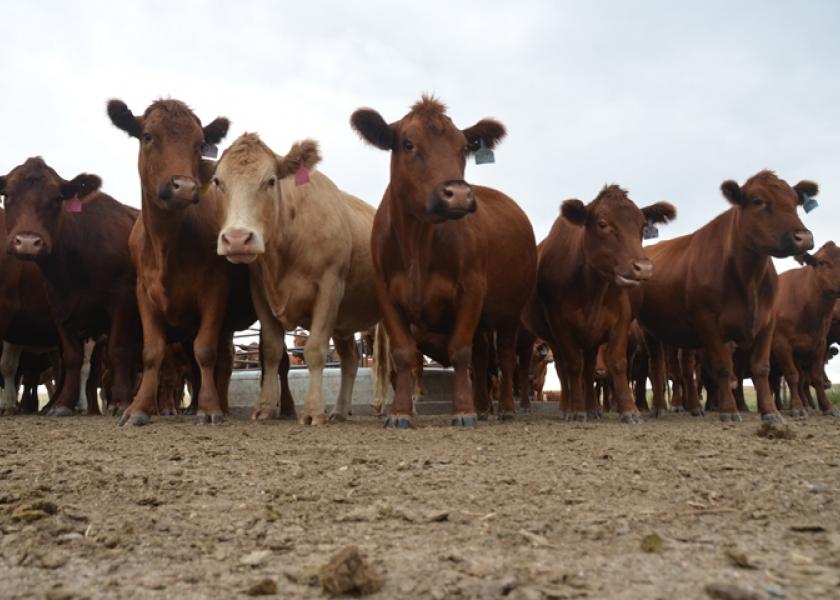Cattle Inventory By Number: How Does It Compare?

It’s official. The cattle inventory report has been released by the USDA National Agricultural Statistics Service, detailing the change in cattle inventory throughout the country as of Jan. 1, 2023 from the previous year.
On que with the 10-year cattle cycle, 2022 brought drought across much of the country, leading to multiple inventory reactions within the industry.
Specifically, 2022 caused an alarming increase in beef cow slaughter.
Here’s a look at the beef cow inventory numbers by state, comparing the start of 2022 to 2023, as well as 2013—the year following the most recent widespread drought prior to 2022.
In the Jan. 1, 2023 report, total beef cow inventory numbers were down 4% year-over-year, coming in at 28.9 million head. Additionally, the total beef cows reached the lowest point in inventory in over 50 years.
Here’s a look at how the total beef cow inventory had changed since 2013.
Following the beef cow decreasing trend, beef replacement heifers came in at 5.16 million head, down 6% from last year, in the Jan. 2023 report. This figure was much higher than the expected 3.5% decrease.
Chip Flory, host of “AgriTalk” said in a recent segment, “If we are looking for signs that the beef herd is being rebuilt, we need to keep looking.”
Rabobank’s Lance Zimmerman, senior analyst in animal protein, believes U.S. cattle producers are at least two years away from turning toward an expansion mindset and away from recent cow liquidation trends. Zimmerman expects the rebuilding to start in 2025 at the earliest.
In the coming years, breeding females will likely be the limiting factor.
“I think it's an inability on the beef heifer side of things. Right now, you don't have grass, you don't have forage and the heifers are worth more going to the feedlot than what they are going out to pasture. That to me is an inability to expand,” Flory adds.
Here’s a look at heifer slaughter by year since 2012.
The report estimates the 2022 calf crop in the U.S. to total 34.5 million head, down 2% from the previous year. With a dip in breeding females, we can also expect to see 2024 calf crop numbers to decline even further.
According to USDA-NASS, the calf crop total in 2022 was comparable to the calf crop of 2012—years both stricken with widespread drought in cattle country.
Here’s a look at calf crop totals, by year since 2011.
Meanwhile, cattle on feed inventory for all feedlots totaled 14.2 million head on Jan. 1, 2023, down 4% from a year ago.
Here’s the cattle on feed inventory by state, comparing 2022 to 2023 totals.
Additionally, total cattle on feed numbers decreased nearly 540,000 head from a year ago.
Zimmerman notes that the cattle on feed number will shift, eventually.
“Significant reductions in cattle slaughter and beef production are coming as the industry waits for the shift,” he adds. “Recent herd contraction and the eventual transition to heifer retention mean it is plausible that U.S. cattle slaughter will decline between one and 1.5 million head per year for the next four to five years before increasing again.”
According to USDA-NASS, as of Jan. 1, 2023, all cattle and calves total 89.3 million head-- the lowest in inventory in eight years.
While 2022 may be behind us, it’s clear that the impacts from the year’s weather and cattle inventory reactions will continue to affect the industry for years to come.
Read More:
Will Volatility and Uncertainty Delay the Next Cattle Cycle?
U.S. Cattle Herd Smallest in Eight Years








